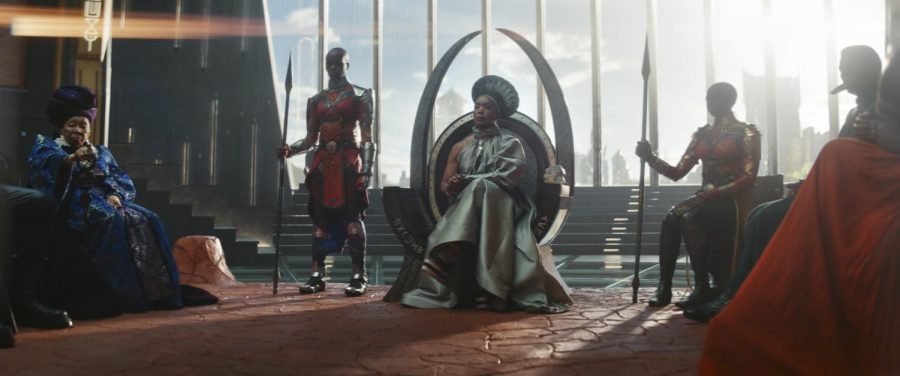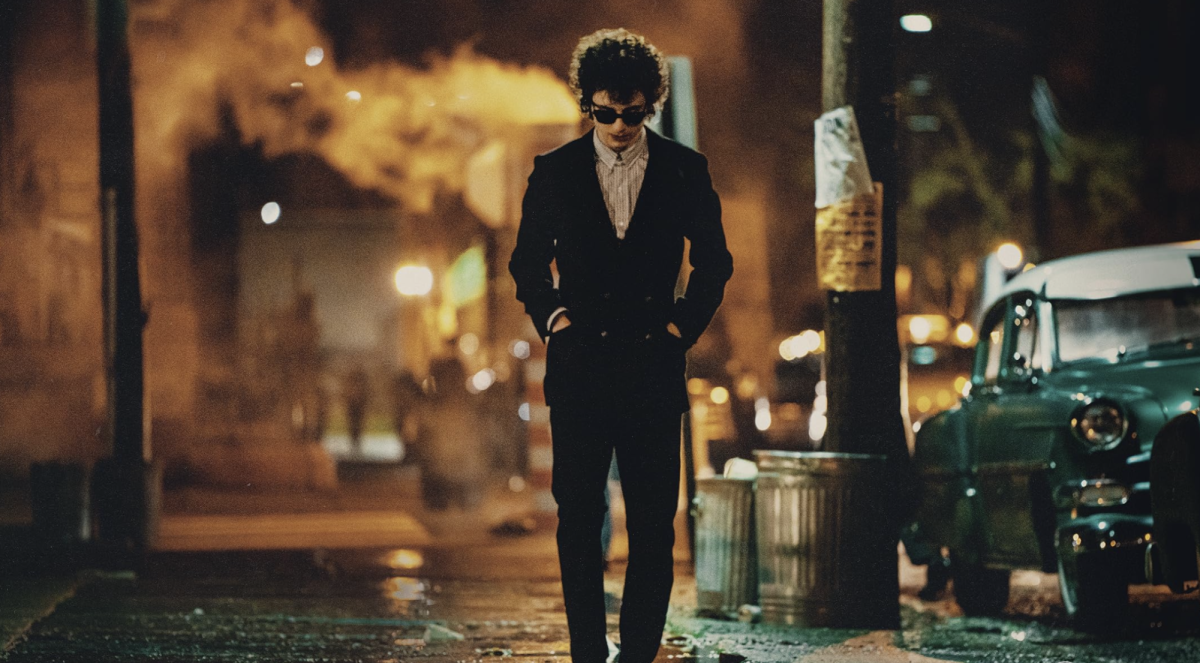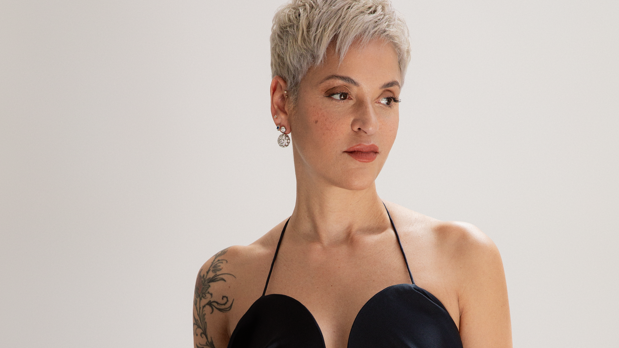Marvel loves to play with the idea of loss. By killing off half their cast and bringing them back with a single snap, it’s clear death is simply an emotional tool for them to use. With the introduction of the multiverse in recent projects, the concept allows for characters who have been killed off to be brought back with no repercussions and no true explanations. Even in the first Black Panther film, T’Challa is presumed dead, then brought back to life to save the day. Death isn’t real in the Marvel Cinematic Universe. So how do they cope when faced with a death that actually is?
“Black Panther” was a cultural phenomenon. It showed the world that Black superheroes and Black stories belong on the big screen, with a narrative and tone distinctly different from other films. It was a welcome departure from the classic Marvel content and appeared to be the start of a promising future for Black Panther, played by Chadwick Boseman.
Boseman unexpectedly passed at the end of 2020 after a long, private battle with colon cancer. The world was left not only to deal with his death, but to question the future of the Black Panther. He was solidified as one of the next big players in the future of the Marvel universe, and a sequel to “Black Panther” had already been confirmed. Would he be recast? Would the sequel be abandoned all together? Would the character?
Director Ryan Coogler decided to move forward with the sequel, rewriting the film into a tribute to Chadwick and the character of T’Challa. Kevin Feige, president of Marvel Studios, announced that T’Challa would not be recast. The movie begins with T’Challa dying of an unknown illness unexpectedly, mirroring real life. “Black Panther: Wakanda Forever” is an exploration of grief and unimaginable loss, all within a story that introduces a new villain and a whole new hero. There’s a lot going on, and the almost three hours of screen time reflects that. Even with some truly incredible moments, “Black Panther: Wakanda Forever” unfortunately falls short of its predecessor.
The film’s biggest issue is the one thing it could not control. Boseman’s loss and presence is felt throughout the film, but in my opinion, it’s not felt enough. Marvel made a typical Marvel movie with “Black Panther: Wakanda Forever.” It’s full of outrageous CGI fight sequences and out of place cameos, only this time with a grief subplot. But this isn’t a typical situation, and it shouldn’t have been a typical Marvel movie. Making a superhero movie without its superhero is an impossible task, one that Coogler attempted with lackluster execution.
There are moments in the film that stand out, of course. There’s T’Challa’s funeral, a harrowing opening credit sequence and a beautiful ceremony at the end of the movie. But they are only that: just moments. Despite strong performances from the entire cast, no one can entirely make up for Boseman’s loss. While watching, I was left craving more of those intimate moments and more time to mourn the loss. The Marvel formula unfortunately doesn’t allow for that.
The film’s biggest highlight is the villain Namor, played by Tenoch Huerta. In the comics, Namor is a human-Atlantean antihero with pointy ears, winged feet and a spandex outfit. He’s a little goofy and it’s hard to take him seriously. Coogler was able to add a whole other layer of depth to the character by incorporating Mesoamerican and Spanish heritage into his backstory and making him a version of a god within his own culture.
With Namor, Marvel has finally delivered on some long overdue representation. His motivations are clear and understandable, and at times you can’t help but be on his side. Huerta gives an incredibly compelling performance. His arc, at times, is reminiscent of the antihero from the first film, Killmonger. Namor’s underwater society is beautiful, but his plotline ultimately results in some underwhelming fight scenes.
Namor’s people live beneath the ocean and bringing them above land to fight Wakandans allows for an abundance of CGI. This leaves nearly every fight scene in the film feeling bland and overly confusing. No one knows where to look, and I felt myself getting lost in the abundance of water effects every time. There’s only one true one-on-one fight scene, and there’s no argument that it’s the best in the film. “Black Panther” had more one-on-one action scenes with plenty of emotion and weight. “Black Panther: Wakanda Forever” is lacking that. Overall, the action sequences in the film were simply too much, too long, too crowded and too heavily reliant on CGI.
It does not go unnoticed that this is a woman-led film. Wakanda, at the moment, is a matriarchy led by T’Challa’s mother Queen Ramonda, played by Angela Bassett, and his sister Shuri, played by Letitia Wright. Okoye (Danai Gurira) and Nakia (Lupita Nyong’o) also have decent sized roles in the film and deliver another layer of emotion and heart. Wright steps away from the comedic relief in this film and steps up into a leading role. She does deliver some emotion, but her performance is overshadowed by that of stronger, more experienced actors. Basset is certainly the standout, delivering a performance of grace, passion and class. Women are the heart of Wakanda in this film, and it’s incredibly powerful.
Another issue with “Black Panther: Wakanda Forever” is its out of place plotlines. This movie was the introduction of Riri Williams, Ironheart, who will have her own series on Disney+ in 2023. Played by Dominique Thorne, she serves as a wide-eyed comic relief character, similar to Spider-Man in “Captain America: Civil War.” However, she feels slightly out of place, and is overall reduced to a plot device as opposed to a fleshed-out character.
There’s also a CIA subplot featuring Everett Ross (Martin Freeman), who had a supporting role in “Black Panther.” His appearance feels out of place and the plotline is eventually abandoned all together. In classic Marvel fashion, the movie features more subplots than it knows what to do with, causing the runtime to drag.
Visually, the film is stunning. Wakanda is as beautiful as ever, the underwater sea city known as Talokan is striking and Ruth Carter’s award-winning costume design from the first film is back in full swing. Coogler, as with the first film, is able to lift up marginalized cultures without it feeling forced. Another amazing score is produced by Ludwig Goransson, featuring Rhianna, Stormzy and other incredible Black and Hispanic artists. The soundtrack allows for scenes to seamlessly flow from one to the next, adding tenfold to the emotion of the film. Goransson is a key player to watch out for in the future of composers.
Overall, “Black Panther: Wakanda Forever” is worth the watch. It’s an entertaining film with the introduction of a new dynamic villain, and it pays homage to Boseman the best it can. Many of the film’s flaws are not its own fault, as the director and cast did the best they could despite momentous loss. It’s a welcome addition to the Marvel Cinematic Universe and serves as an official send off to both Boseman and T’Challa. However, one can’t help but wonder what could have been and wish that Marvel deviated from the typical to give both the character and the actor a proper send off.
Shannon Moore can be reached at [email protected]



















